Officially, the Lynda and Stewart Resnick Exhibition Pavilion at the Los Angeles County Museum of Art opens on Oct.2, with a free weekend for the community. But it’s tiptoeing out this weekend and over the next few days for those closest to LACMA.
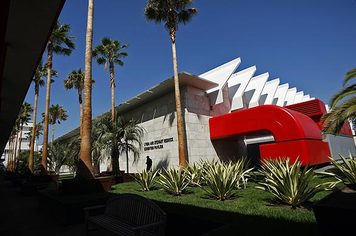 The big gala honoring the Resnicks — called “The Unmasking” — is tonight.
The big gala honoring the Resnicks — called “The Unmasking” — is tonight.
And, from afar, LACMA has much to celebrate. The museum says “the single-story, 45,000 square foot structure is the largest purpose-built, naturally lit, open-plan museum space in the world.” It was designed by Renzo Piano, and is surrounded by a “Palm Garden” by Robert Irwin: “The palms, some quite rare, come in a wide variety of sizes, colors and shapes. They are set into orderly grids, articulated by Cor-ten steel walls and containers. Irwin has noted that certain cycads chosen for the site are among the first plants on earth.”
The pavilion opens with three exhibitions: Eye for the Sensual: Selections from the Resnick Collection; Olmec: Colossal Masterworks of Ancient Mexico; and Fashioning Fashion: European Dress in Detail, 1700-1915.
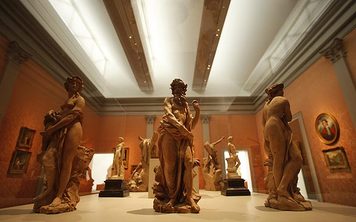 LACMA also seems to be lucky this time in its key donors; the Resnicks donated $45 million in cash and pledged $10 million worth of art, with no strings attached. In an article by Jori Finkel in the Los Angeles Times, Lynda Resnick says the words that would bring joy to any museum director: “We see no need to micromanage; we have seen the negative effects of it.” That’s an allusion to Eli Broad, who financed another building at LACMA, filled with his collection, but now plans to build his own museum instead of givng the art to LACMA.
LACMA also seems to be lucky this time in its key donors; the Resnicks donated $45 million in cash and pledged $10 million worth of art, with no strings attached. In an article by Jori Finkel in the Los Angeles Times, Lynda Resnick says the words that would bring joy to any museum director: “We see no need to micromanage; we have seen the negative effects of it.” That’s an allusion to Eli Broad, who financed another building at LACMA, filled with his collection, but now plans to build his own museum instead of givng the art to LACMA.
The Resnicks collect Old Masters, in contrast to the prevailing tastes for contemporary art in LA — and that’s nice to hear, even though their taste sounds a little over the top. The Times calls their collection “flashy,” and says it has “an abundance of flesh, from over-ripe cleavage to outright nudity.” LACMA director Michael Govan joked that “We had trouble finding images that we could use on the street banners.” Lynda Resnick’s picture in the Times says it all; she’s quite the contrast to the stereotypical Old Master collector.
Meantime, the Times‘s architecture critic, Christopher Hawthorne, gives the building itself something of a mixed review, while art critic Christopher Knight appraises the three exhibits here.
It’s hard to assess this from afar, but from the sounds of all the articles I’ve read, the pavilion has some drawbacks as a showcase for art, but nothing (so far) like the troubles on view at other museums with starchitect buildings. For a few of that, take a look at Eric Felton’s column in yesterday’s Wall Street Journal, which discusses the troubles at four museums.
Photo Credits: Courtesy of the Los Angeles Times

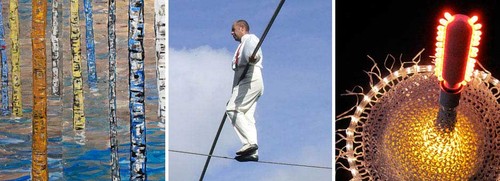
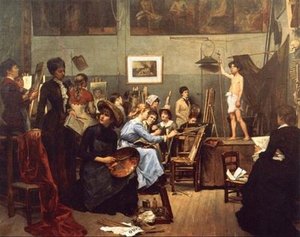
 But they leave traces, and the
But they leave traces, and the 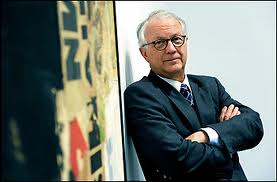 It’s a naming gift, and thus won’t be official until the Regents of the Smithsonian Institution meet to approve it this fall. But it’s real, and it comes on top of $1.5 million Koshalek has raised for another part of his $15 million project to put the Hirshhorn Museum on the world’s cultural map — a classroom of the future in the lobby.
It’s a naming gift, and thus won’t be official until the Regents of the Smithsonian Institution meet to approve it this fall. But it’s real, and it comes on top of $1.5 million Koshalek has raised for another part of his $15 million project to put the Hirshhorn Museum on the world’s cultural map — a classroom of the future in the lobby.